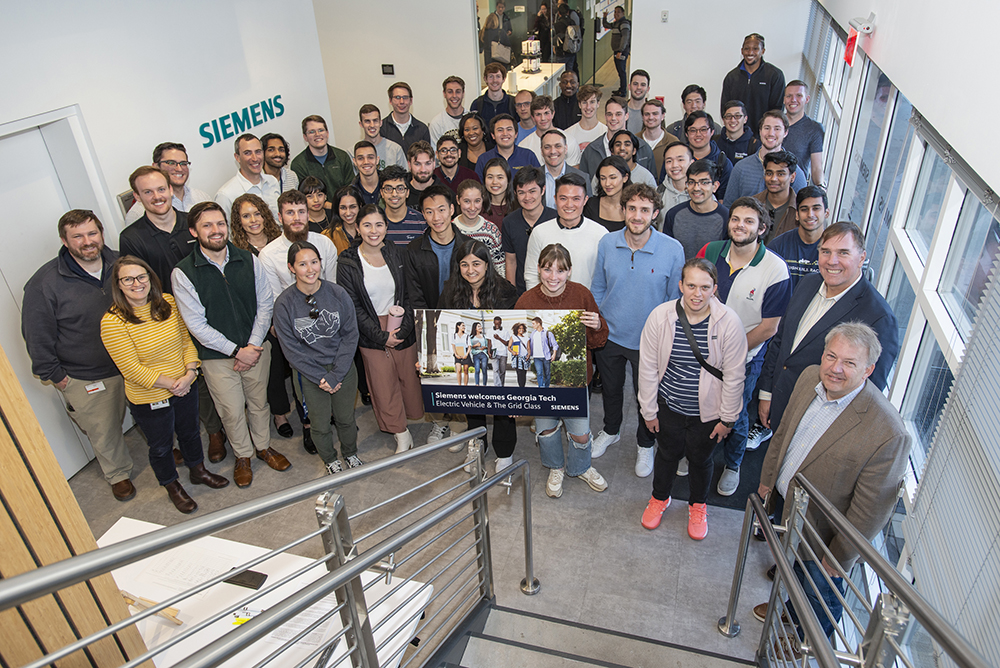
Georgia Tech students enrolled in Electric Vehicles & the Grid stop to pose with Siemens employees during a class visit to the Peachtree Corners office.
Woodruff School Partners with Siemens to Launch New Course
The course, Electric Vehicles & the Grid, is providing a transformative learning experience to Georgia Tech students while preparing them to charge into the future.
March 23, 2023
By Ashley Ritchie and Chloe Arrington | Photography by Steve J Swieter
Over 9% of global passenger vehicle sales last year were electric vehicles (EVs) according to Bloomberg New Energy Finance. EV sales are surging due to a combination of policy support, improvements in battery technology, more charging infrastructure, and new compelling vehicles from automakers.
To address the rapid growth in the EV industry, the George W. Woodruff School of Mechanical Engineering has partnered with Siemens to offer a new course, Electric Vehicles & the Grid. The course launched in the spring semester and is providing a transformative learning experience to Georgia Tech students while preparing them to charge into the future.
With a focus on innovation and sustainability, Electric Vehicles & the Grid teaches engineering principles of electric transportation and the energy infrastructure. The class also covers the emerging technologies of batteries, renewables, and connectivity that will allow further optimization of the products with the grid.
Although EV courses are taught across the nation, the class's additional focus on the grid is a component that is missing from courses taught at other institutions.
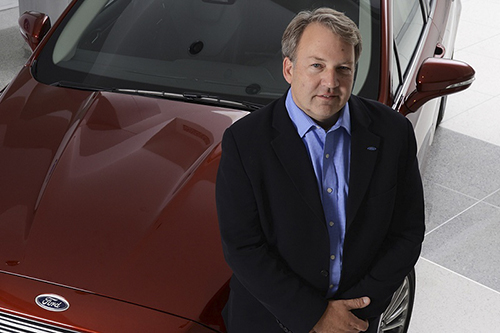
“Through this course, we are teaching Georgia Tech students the skills they need to solve the world’s emerging and biggest challenges to electrification,” said Professor of the Practice Mike Tinskey who teaches the course. Prior to joining Georgia Tech, Tinskey served as the Global Director of Electrification for Ford.
In addition to teaching the curriculum, Tinskey enjoys incorporating interesting facts into his lectures. For example, he recently taught students about the duck curve. The duck curve is a graph of power production over the course of a day that shows the timing imbalance between peak demand and solar power generation.
“The duck curve is a problem across the U.S. People are returning to their homes from work, at the same time that the sun is setting, and less energy is produced from solar. Combined that this time is usually when electric vehicles are plugged in, it’s starting to become a timing problem for the grid and the graph resembles the shape of a duck,” he said.
With growth in the EV industry leading to more jobs for future engineers, student interest in the EV market is on the rise. When registration opened for Electric Vehicles & the Grid, enrollment quickly reached capacity and students were placed on a waitlist.
When asked what drew her to enroll in the course, mechanical engineering Ph.D. student Caroline Massey noted that the class was an interesting follow-up to her undergraduate studies.
“I wanted to learn more about electric vehicles and grid technology. I really enjoyed learning about power electronics in undergrad and thought that this may be a good fit,” she said.
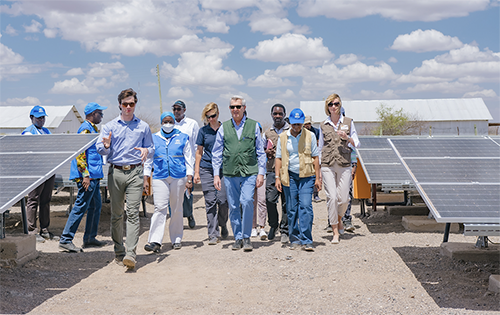
To make the class even more engaging, Tinskey has invited industry leaders and other Georgia Tech professors to speak to the students enrolled in the course. One of the upcoming guest speakers will be Georgia Tech alumnus Nicholas Selby (BS ME '16). Selby, who serves as the director of engineering with Renewvia Solar Africa, was named to the 2023 Forbes 30 Under 30 list and is known for his viral 2013 New Student Convocation speech.
“I said in my speech that ‘Green energy and world peace can wait.’ Now I'm working for a solar mini-grid company. Honestly, having worked with a DOD group working on Iron-Man technology, I find the engineering challenges of solar rural electrification more intellectually stimulating and the applications more personally rewarding," he said.

A Partnership between the Woodruff School and Siemens
Prior to launching the course, Devesh Ranjan, Eugene C. Gwaltney, Jr. School Chair, encouraged Tinskey to present an outline of the class to the Woodruff School Advisory Board.
“We wanted to offer Electric Vehicles & the Grid to enhance our course offerings and research in sustainability and decarbonization – an area of focus in the Woodruff School’s Strategic Plan,” said Ranjan.
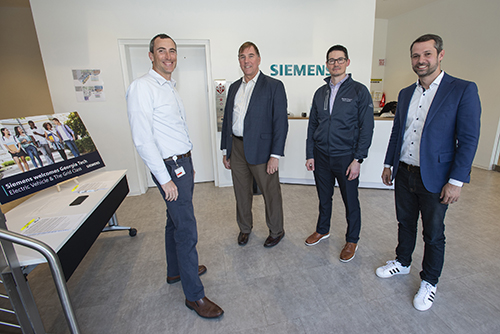
After hearing Tinskey’s presentation, advisory board member and Georgia Tech alumnus Barry Powell (MS ME ‘91) immediately saw potential. As Head of Siemens Electrical Products for North America, he worked with John DeBoer, Head of Siemens Future Grid and eMobility Solutions, to sponsor the course on behalf of Siemens, sparking a partnership between his company and alma mater.
Siemens has been actively involved in the course, contributing to syllabus content and visiting the students in February to talk about the electrification market, its growth, and future career opportunities. The company also hosted an event for the students at their Peachtree Corners office earlier this month. Students had the chance to tour parts of the facility and were guided through dedicated learning stations that covered specific types of electrical charging technologies and load management.
“This event was a great opportunity to bring together some of the top engineering students in the country with passionate Siemens employees designing the key infrastructure needed to support the electrification of transportation in our country,” said Powell. “It was very inspirational to see the stimulating dialogues at the hands-on stations and the great questions asked by the group. The future is bright!”
Students were also inspired by the event, including electrical engineering student Timothy Boyer.
“Having the chance to see what we are learning about in the real world is an aspect many Georgia Tech classes completely miss out on,” he said. “It significantly helps you to appreciate what you are learning and inspires you.”
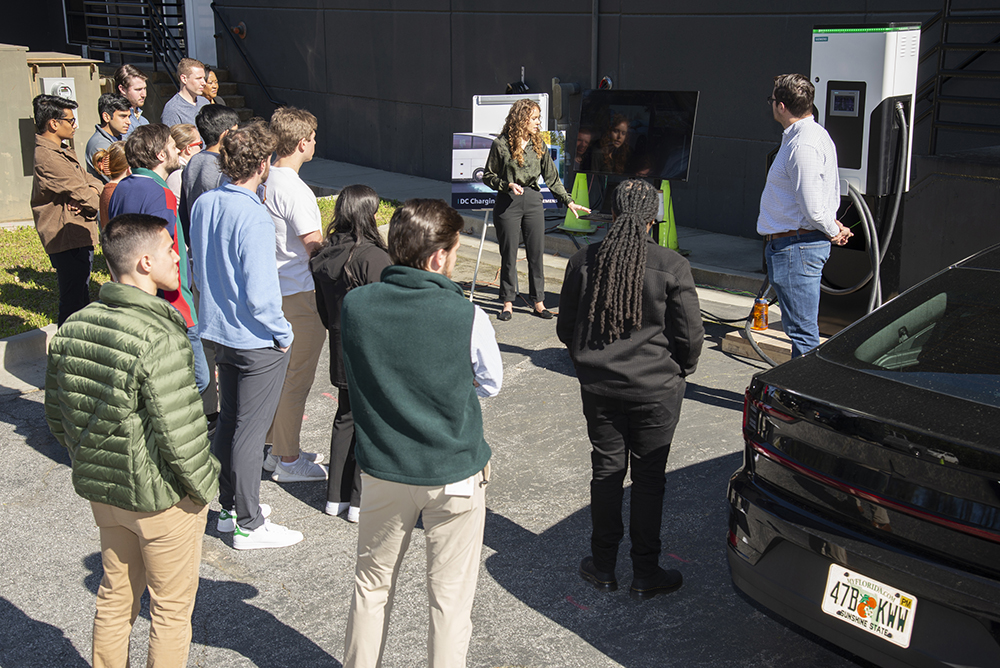
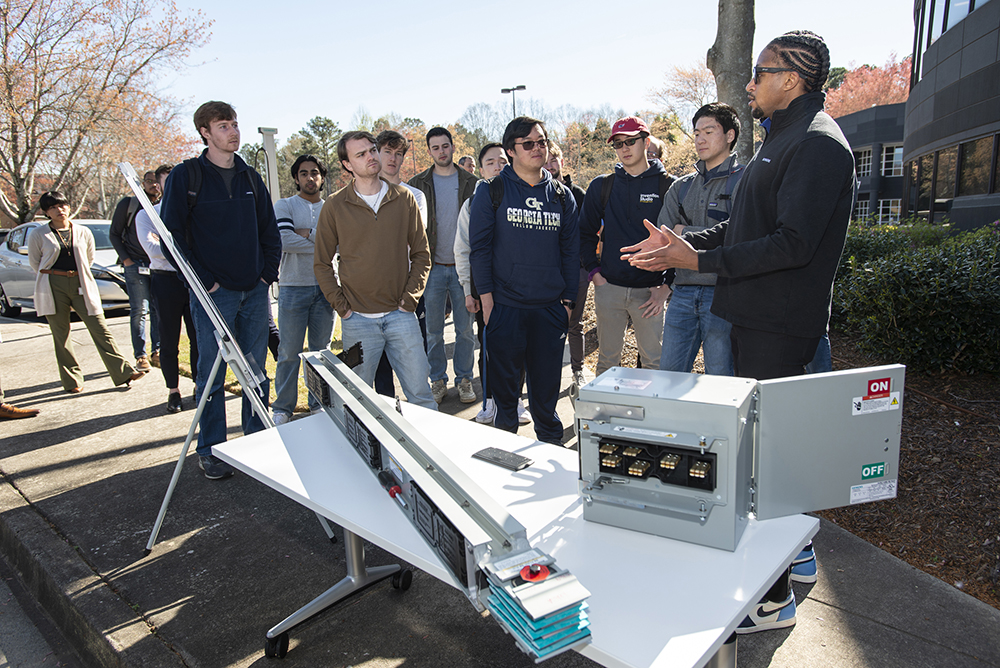

Looking Ahead
Tinskey hopes to teach Electric Vehicles & the Grid to Georgia Tech students in the future, both in-person and online. Currently, 72 students are enrolled in the course for the spring semester and 30% of those enrolled are distance learning students.
“I hope to offer the course next fall and continue to adapt the course to the rapidly changing landscape,” he added.
To view a photo gallery from the Electric Vehicles & the Grid class visit to Siemens, visit https://bit.ly/evandthegridphotos.
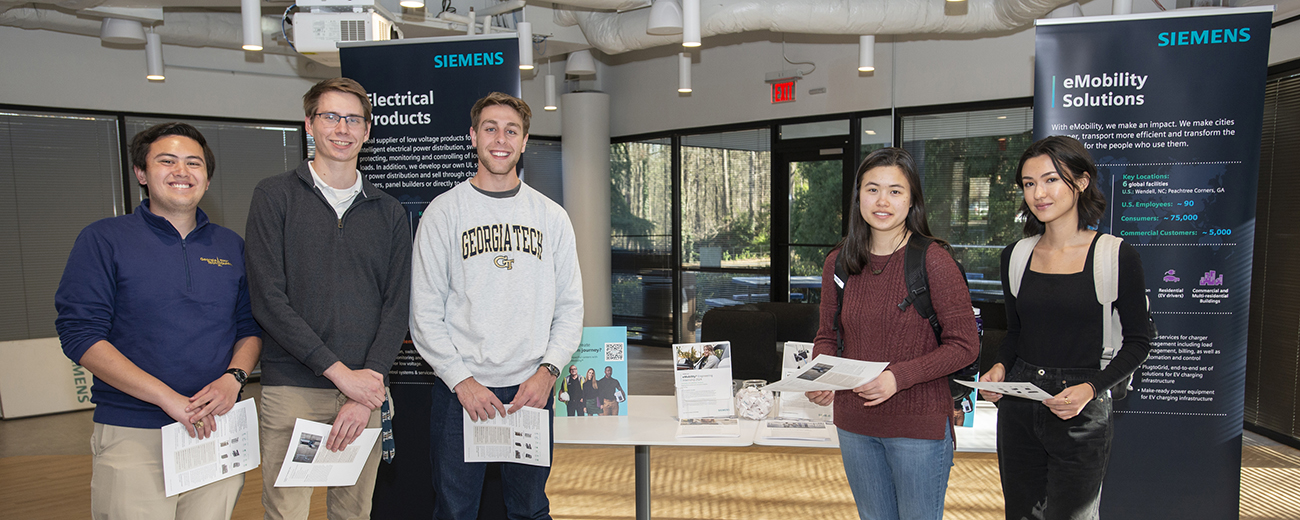

About Siemens
Siemens Corporation is a U.S. subsidiary of Siemens AG, a technology company focused on industry, infrastructure, transport, and healthcare. From more resource-efficient factories, resilient supply chains, and smarter buildings and grids, to cleaner and more comfortable transportation as well as advanced healthcare, the company creates technology with purpose adding real value for customers. By combining the real and the digital worlds, Siemens empowers its customers to transform their industries and markets, helping them to transform the everyday for billions of people. Siemens also owns a majority stake in the publicly listed company Siemens Healthineers, a globally leading medical technology provider shaping the future of healthcare. In addition, Siemens holds a minority stake in Siemens Energy, a global leader in the transmission and generation of electrical power. In fiscal 2022, which ended on September 30, 2022, Siemens Group USA generated revenue of $18.6 billion and employs approximately 45,000 people serving customers in all 50 states and Puerto Rico.
